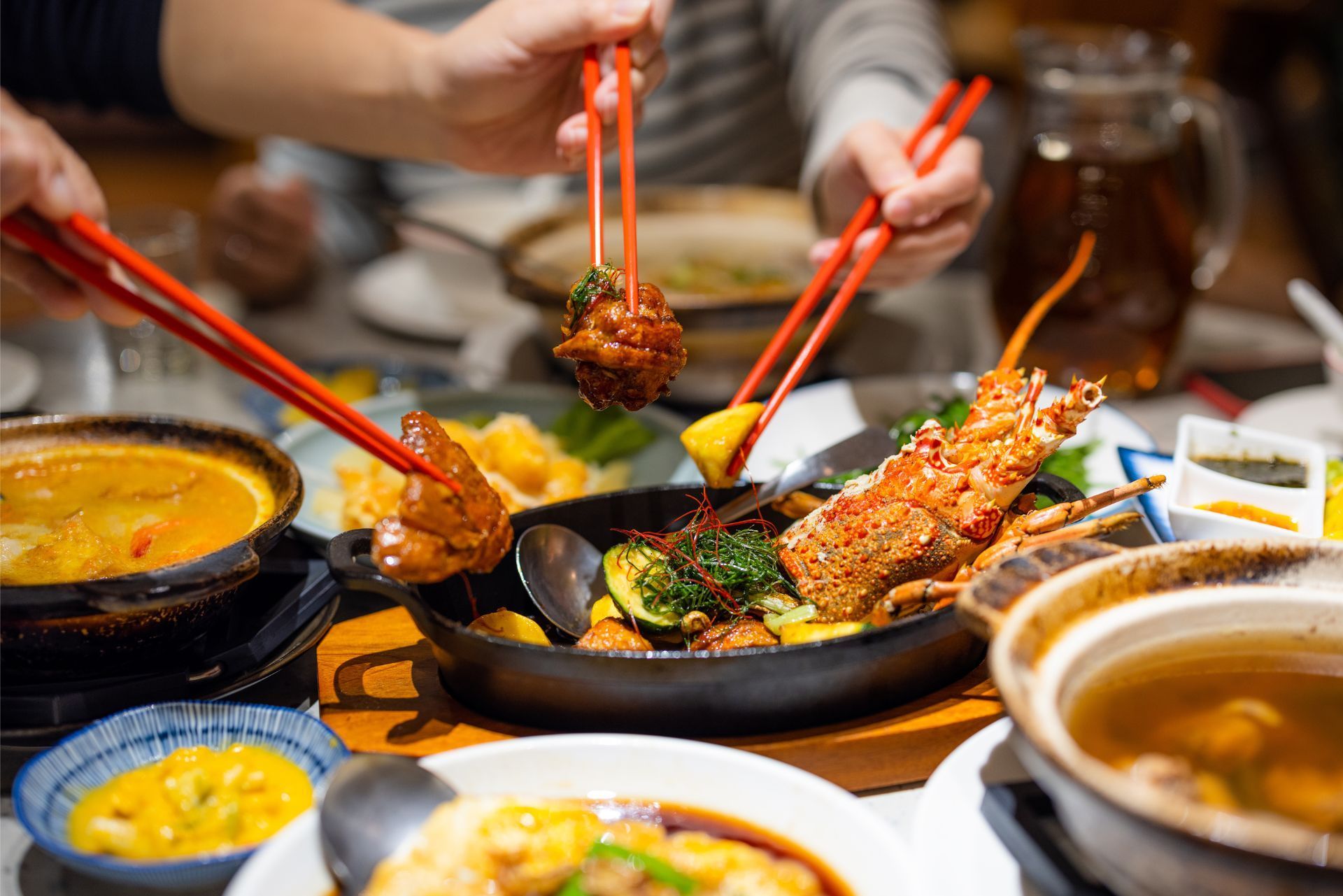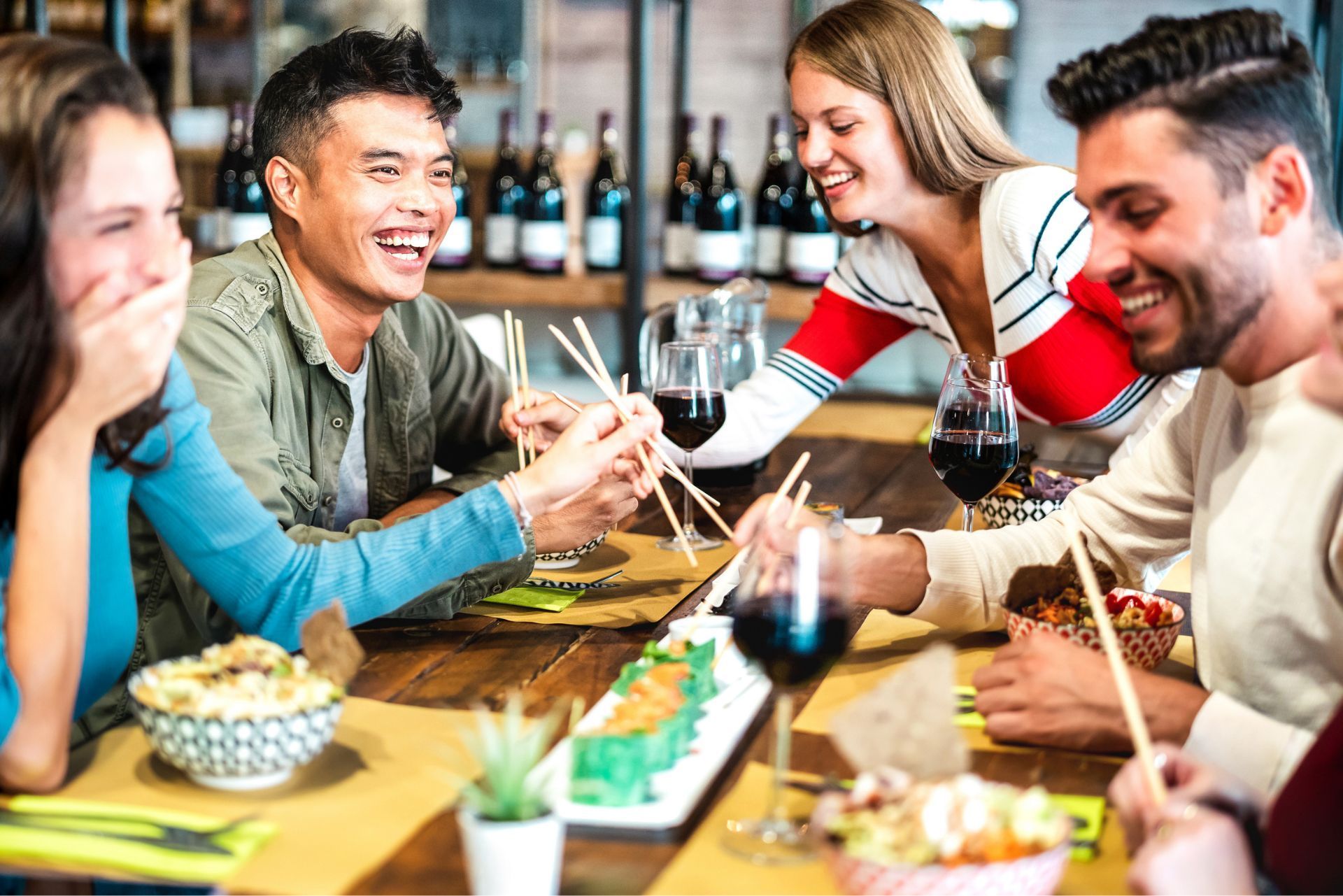Top 3 Recommended Policies

Operating an Asian restaurant in Colorado comes with its unique set of opportunities and challenges. From the vibrant culinary scene to the competitive restaurant market, business owners must navigate a complex landscape—especially when it comes to protecting their investment through insurance. Understanding the nuances of Asian restaurant insurance in Colorado is essential for safeguarding your business against risks, managing costs, and ensuring long-term success.
Colorado’s restaurant industry is a significant part of the state’s economy, employing over 303,000 people and representing 11% of the labor force. With more than 14,400 restaurants statewide, Colorado ranks 5th nationally in the number of restaurants per capita, highlighting the intense competition and the need for robust business protection strategies. This article will explore everything you need to know about insurance tailored for Asian restaurants in Colorado, including the types of coverage available, factors influencing insurance costs, and strategies to optimize your policy.
Given the rising costs of homeowners and commercial insurance in Colorado, which are among the highest in the nation, it’s crucial for restaurant owners to stay informed. According to The Journal, Colorado’s average homeowners insurance premium is 35% higher than the national average, reflecting broader trends in the state’s insurance market that also impact commercial policies.
Understanding the Insurance Needs of Asian Restaurants in Colorado
Restaurants face a variety of risks daily—from property damage and liability claims to employee-related issues and supply chain disruptions. Asian restaurants, in particular, may have specific considerations such as specialized kitchen equipment, unique ingredient storage needs, and cultural factors that influence business operations. These establishments often serve a diverse clientele, which can introduce additional complexities in terms of compliance with health regulations and customer expectations regarding authenticity and quality.
Insurance for Asian restaurants in Colorado typically includes several core coverages:
- General Liability Insurance: Protects against third-party claims of bodily injury or property damage occurring on your premises.
- Property Insurance: Covers damage to your restaurant’s physical assets, including kitchen equipment, furniture, and inventory, due to fire, theft, or natural disasters.
- Workers’ Compensation Insurance: Mandatory in Colorado for most businesses, this covers medical expenses and lost wages if an employee is injured on the job.
- Business Interruption Insurance: Helps cover lost income if your restaurant must close temporarily due to a covered event like a fire or severe weather.
- Liquor Liability Insurance: Essential if your restaurant serves alcohol, protecting against claims related to intoxicated customers.
Given Colorado’s susceptibility to natural disasters such as wildfires and hailstorms, property insurance is especially critical. The state’s property and casualty insurance market is under pressure from increasing regulatory burdens and more frequent costly natural disasters, which have driven up premiums significantly (Metro Denver Economic Development Corporation). This landscape necessitates that restaurant owners not only secure adequate coverage but also remain vigilant about risk management practices, such as regular safety audits and employee training programs, to mitigate potential claims.
Special Considerations for Asian Restaurants
Asian restaurants often feature specialized kitchen setups, including woks, steamers, and rice cookers, which may require specific coverage or endorsements. Additionally, many Asian restaurants import unique ingredients that could be costly to replace, so inventory coverage should be carefully evaluated. This aspect is particularly important as fluctuations in international shipping can impact the availability and cost of these ingredients, which may lead to business interruptions if not properly insured.
Moreover, cultural celebrations and events might increase foot traffic and require additional liability coverage. For example, hosting Lunar New Year festivities or catering large gatherings can elevate risk exposure, making event insurance or increased liability limits advisable. These events not only boost revenue but also enhance community engagement, making it essential for restaurant owners to balance the excitement of such occasions with the necessary precautions to protect their business. Furthermore, marketing these events effectively can attract new customers and solidify the restaurant's reputation as a cultural hub, adding another layer of importance to understanding the insurance landscape.

Factors Influencing Insurance Costs for Asian Restaurants in Colorado
Insurance premiums for Asian restaurants in Colorado can vary widely based on multiple factors. Understanding these can help owners manage costs while ensuring adequate coverage.
Location and Natural Disaster Risk
Colorado’s diverse geography means that insurance costs can fluctuate depending on where your restaurant is located. Areas prone to wildfires, hail, or flooding often face higher premiums. The state’s increasing frequency of natural disasters has contributed to a rise in insurance costs, with average homeowners insurance premiums in Colorado reaching $1,640—35% higher than the national average (The Journal).
For commercial properties, these risks translate into higher property insurance premiums, especially in areas with a history of claims. Asian restaurants with extensive kitchen equipment and perishable inventory are particularly vulnerable to such risks. Moreover, the unique nature of Asian cuisine often involves the use of specialized cooking equipment, such as woks and steamers, which may require additional coverage due to their potential fire hazards. This is especially pertinent in regions where fire departments are stretched thin during peak wildfire seasons, further complicating the insurance landscape.
Regulatory Environment and Market Pressures
Colorado’s insurance market is experiencing significant pressure due to increasing regulatory burdens and soaring reinsurance costs. These factors have led to Colorado ranking as the sixth-costliest state for homeowners insurance, with average annual premiums hitting $4,072 for $300,000 in coverage (ProgramBusiness).
While these figures relate to homeowners insurance, they reflect broader market trends affecting commercial insurance premiums as well. A report by the Colorado Chamber of Commerce highlights that new regulations over the past four years have elevated costs for consumers and businesses alike (Colorado Association of Health Plans). Additionally, the introduction of stricter health and safety regulations, particularly in the wake of the COVID-19 pandemic, has forced many restaurants to adapt their operations, which can lead to increased insurance premiums as businesses seek to comply with new standards.
Business Size and Revenue
The size of your Asian restaurant and its annual revenue also play a significant role in determining insurance costs. Larger establishments with higher sales volumes generally face higher premiums due to increased exposure to risk. Additionally, restaurants with liquor licenses tend to pay more for liquor liability insurance, which is crucial for compliance and protection.
Furthermore, the type of cuisine offered can also influence insurance costs. Asian restaurants that provide delivery services or catering may need additional coverage for transportation-related risks. This can include liability for accidents that occur while food is being delivered, as well as the risk of foodborne illnesses, which can lead to costly claims. As the demand for Asian cuisine continues to grow in Colorado, restaurant owners must be proactive in assessing their insurance needs to ensure they are adequately protected against these evolving risks.
Key Insurance Policies for Asian Restaurant Owners
Choosing the right insurance policies is vital for protecting your restaurant’s assets, employees, and reputation. Below are the most important types of insurance coverage tailored for Asian restaurants in Colorado.
General Liability Insurance
This is the foundation of any restaurant’s insurance portfolio. It covers claims related to customer injuries, property damage, and advertising mistakes. For Asian restaurants, where customers often dine on-site, slip-and-fall incidents or allergic reactions could trigger liability claims. Additionally, it is crucial to ensure that your restaurant staff is well-trained in food safety protocols to minimize the risk of such incidents. Regular staff training and clear communication about allergens can significantly reduce the likelihood of customer complaints and potential lawsuits.
Property Insurance
Property insurance protects your physical assets from damage caused by fire, theft, vandalism, or natural disasters. Given Colorado’s exposure to wildfires and hailstorms, this coverage is indispensable. It can also cover specialized kitchen equipment essential to Asian cuisine preparation. For instance, high-quality woks, rice cookers, and sushi-making equipment can be costly to replace. Furthermore, property insurance can extend to cover loss of inventory, which is particularly important for restaurants that rely on fresh ingredients, such as seafood and vegetables, that can spoil quickly in the event of a disaster.
Workers’ Compensation Insurance
In Colorado, workers’ compensation insurance is mandatory for most employers. It covers medical expenses and lost wages for employees injured while working. Given the fast-paced and sometimes hazardous nature of restaurant kitchens, this coverage protects both employees and business owners. Moreover, fostering a safe work environment can help reduce the number of claims and enhance employee morale. Implementing safety protocols, such as proper knife handling and equipment operation training, can significantly mitigate risks and demonstrate a commitment to employee welfare.
Business Interruption Insurance
Unexpected closures due to covered events like fires or severe weather can devastate a restaurant’s revenue stream. Business interruption insurance helps cover lost income and ongoing expenses during these periods, providing critical financial support to keep your business afloat. This type of insurance is especially important for Asian restaurants that may experience seasonal fluctuations in customer traffic, such as during major holidays like Lunar New Year. Having this safety net can ensure that you can reopen your doors without the burden of crippling financial strain.
Liquor Liability Insurance
If your Asian restaurant serves alcohol, liquor liability insurance is essential. It protects against claims arising from incidents involving intoxicated patrons, including property damage and bodily injury. This coverage is often required by law and by liquor licensing authorities. Additionally, implementing responsible service training for your staff can help mitigate risks associated with alcohol service. By educating your team on how to recognize signs of intoxication and handle difficult situations, you not only protect your business but also create a safer environment for all patrons, enhancing the overall dining experience.

Challenges Facing Colorado’s Restaurant Industry and Insurance Market
Colorado’s restaurant industry is currently navigating a “perfect storm” of challenges that impact insurance needs and costs. According to Denise Mickelsen, spokesperson for the Colorado Restaurant Association, the industry faces rising operational expenses, labor shortages, and regulatory pressures (Axios Denver).
These factors contribute to increased insurance claims and premiums. Additionally, the state’s insurance market is strained by more frequent natural disasters and rising reinsurance costs, creating a challenging environment for restaurant owners seeking affordable coverage (Metro Denver Economic Development Corporation).
For Asian restaurant owners, this means carefully balancing adequate coverage with cost management strategies to remain competitive and protected. The unique culinary offerings and cultural significance of Asian cuisine in Colorado add another layer of complexity; restaurateurs must not only ensure compliance with local health regulations but also navigate the intricacies of cultural representation and authenticity in their menus. This balancing act often requires additional investments in training and sourcing quality ingredients, further straining their budgets.
Moreover, the impact of the COVID-19 pandemic lingers, with many establishments still recovering from the financial fallout. As consumer behavior shifts towards takeout and delivery, restaurant owners are compelled to adapt their business models, which can lead to increased operational risks. This shift necessitates a reevaluation of insurance policies to cover new liabilities associated with delivery services and online transactions. The evolving landscape of the restaurant industry in Colorado underscores the need for innovative solutions to address these multifaceted challenges, ensuring that owners can sustain their businesses while providing exceptional dining experiences.
Tips for Managing Insurance Costs Without Sacrificing Coverage
While insurance costs in Colorado can be high, there are practical steps Asian restaurant owners can take to optimize their policies and reduce premiums:
- Shop Around and Compare Quotes: Different insurers may offer varying rates and coverage options. Comparing multiple quotes ensures you find the best value.
- Bundle Policies: Combining general liability, property, and workers’ compensation insurance with one provider can lead to discounts.
- Invest in Risk Management: Implementing safety protocols, employee training, and security measures can reduce the likelihood of claims, which insurers reward with lower premiums.
- Review Coverage Annually: As your restaurant evolves, so do your insurance needs. Regularly reviewing and adjusting coverage prevents overpaying for unnecessary protection.
- Increase Deductibles: Opting for a higher deductible can lower your premium, but ensure you can cover the deductible amount if a claim arises.
Additionally, consider engaging with an insurance broker who specializes in the restaurant industry. Brokers have extensive knowledge of the market and can help identify specific policies that cater to your unique needs. They can also provide insights into emerging trends and risks that may affect your business, allowing you to make informed decisions about your coverage. Furthermore, a broker can assist in negotiating better terms with insurers, ensuring you receive the most favorable rates and conditions.
Another effective strategy is to leverage technology to monitor and manage your insurance needs. Many modern insurance providers offer digital tools that allow you to track claims, assess risks, and even receive alerts about policy changes. By staying proactive and informed, you can quickly adapt to any shifts in your business environment, ensuring that your insurance coverage remains relevant and cost-effective. This approach not only helps in managing costs but also fosters a culture of safety and responsibility within your restaurant, ultimately benefiting both your employees and customers.
Conclusion: Protecting Your Asian Restaurant in Colorado
Insurance is a critical component of running a successful Asian restaurant in Colorado’s dynamic and often challenging environment. With the state’s high insurance premiums and evolving regulatory landscape, restaurant owners must be proactive in understanding their insurance needs and securing comprehensive coverage.
By focusing on tailored policies that address the unique risks of Asian cuisine establishments, staying informed about market trends, and employing cost-saving strategies, business owners can safeguard their investments and focus on delivering exceptional dining experiences.
For more detailed insights into Colorado’s insurance market pressures and restaurant industry challenges, consider exploring resources from the
Metro Denver Economic Development Corporation and the
Colorado Restaurant Association.
Contact Us
Phone
Location

